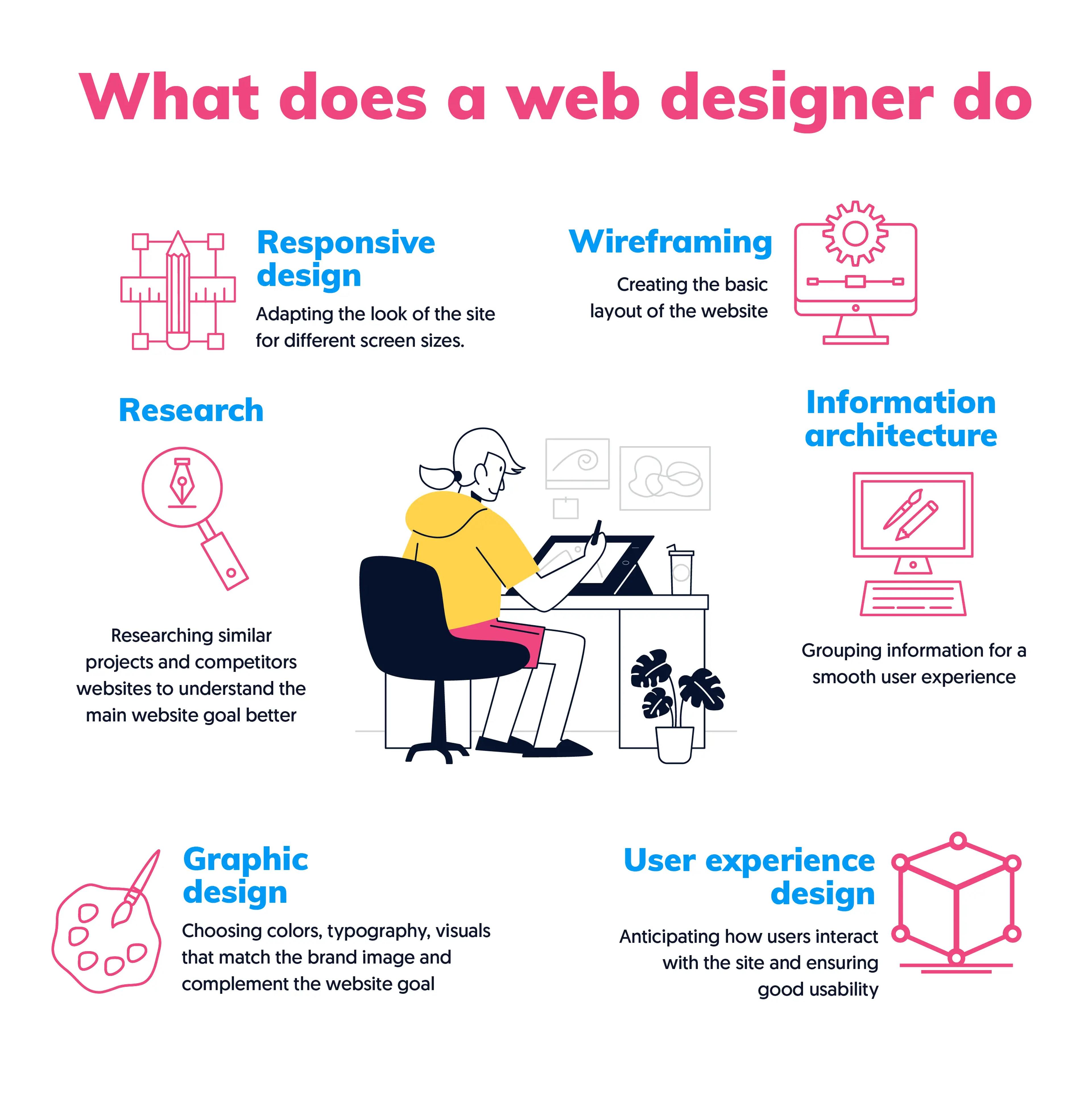Boost Your Organization With Receptive and Straightforward Website Design
In an age where digital interactions determine customer behavior, the relevance of receptive and user-friendly website design can not be overemphasized. A well-structured web site not only accommodates different gadgets however also improves the general customer experience, promoting greater interaction. Secret components such as intuitive navigating and compelling visuals play a crucial function in keeping visitors and driving conversions. As services progressively try on the internet presence, comprehending the nuances of reliable web design can be a video game changer. What strategies can you execute to guarantee your site stands apart in this competitive landscape?
Importance of Responsive Design
In today's electronic landscape, a substantial bulk of internet website traffic stems from mobile phones, underscoring the essential relevance of responsive layout. As individuals progressively access internet sites via smart devices and tablet computers, organizations should guarantee that their on the internet visibility is enhanced for different screen sizes and resolutions. las vegas web design. Receptive style not only improves customer experience but additionally plays an essential function in seo (SEO), as internet search engine prioritize mobile-friendly sites

In addition to improving individual fulfillment, responsive layout can supply an affordable advantage. In a market where digital interactions are vital, businesses that focus on responsive website design setting themselves as forward-thinking, boosting their brand name credibility and ultimately driving conversions.

Crucial Element of User-Friendly Layout
Developing an user-friendly design entails numerous vital elements that improve functionality and ensure a favorable interaction with the website. Most importantly, simplicity is important; a tidy, minimalist layout enables customers to browse easily. Instinctive navigating is another important element, allowing users to find details rapidly without complication. This can be attained through clear food selections, sensible structuring, and regular positioning of navigating switches.
Furthermore, clear typography plays a significant role in customer experience. Choosing legible typefaces and suitable sizes guarantees that customers can quickly consume material without straining their eyes. Effective usage of shade and contrast not just improves looks however also improves readability and availability for users with aesthetic disabilities.
In addition, integrating interactive elements such as buttons and web links that are clearly defined and adequately spaced motivates individual engagement. Feedback devices, like hover impacts or confirmation messages, additionally enhance the communication by supplying users with peace of mind that their activities have been recognized.
Last but not least, optimizing tons times can dramatically impact user satisfaction. A fast-loading site decreases bounce rates and keeps users engaged, ultimately cultivating a more beneficial understanding of the brand. By focusing on these elements, businesses can create an user-friendly design that drives success.
Advantages of Mobile Optimization
Mobile optimization is essential for modern internet sites, as individuals significantly rely upon their mobile phones and tablet computers for surfing. With smart phones representing a considerable portion of internet website traffic, organizations need to make certain that their internet sites are totally optimized for these systems. One of the primary advantages of mobile optimization is enhanced ease of access. Customers can quickly navigate a mobile-optimized website, which improves their overall experience and increases the possibility of interaction.
Furthermore, mobile optimization can cause higher online search engine rankings. Online search engine like Google prioritize mobile-friendly web sites in their algorithms, indicating that businesses with maximized sites are most likely to show up in search results page. This presence can drive much more natural traffic and prospective consumers to the company.
In addition, mobile optimization reduces bounce rates. When customers encounter an internet site that is challenging to browse or reduce to load on their mobile phones, they are likely to leave and seek options. By providing a smooth experience, companies can maintain customers and convert check outs right into sales.
Enhancing Customer Experience
A well-optimized site not only satisfies mobile individuals yet additionally significantly improves general customer experience. By including receptive layout principles, businesses can guarantee that their internet sites come throughout different tools and screen sizes, developing a seamless browsing experience. This adaptability fosters customer engagement, as visitors are much less most likely to run into irritating navigating concerns or altered web content.
In addition, an user-friendly user interface streamlines communications, enabling users to locate information or complete transactions effortlessly. Components such as instinctive food selections, clear calls-to-action, and visually appealing layouts add to a favorable experience, urging individuals to spend more time on the website. Rapid packing times are one more critical facet, as slow sites can lead to high bounce prices and disgruntled clients.
Furthermore, enhancing customer experience includes considering the demands of varied audiences. Implementing features such as alt message for photos and making sure high contrast in between text and history can make web sites much more accessible to people with impairments. Inevitably, focusing on individual experience not only read what he said pleases existing customers yet also brings in new ones, developing a strong structure for company development in a her latest blog progressively electronic landscape.
Measuring Success and ROI
Gauging success and roi (ROI) in receptive web style is vital for recognizing its effect on organization performance (las vegas web design). To properly assess the success of a responsive website design initiative, organizations should establish crucial performance indicators (KPIs) that line up with their purposes. Common KPIs include conversion prices, bounce rates, customer interaction metrics, and average session periods
Tracking these metrics via analytics tools allows organizations to assess how well the responsive style satisfies user requirements across gadgets. A high conversion rate, for instance, indicates that users are not only visiting the site yet are likewise taking preferred activities, such as purchasing or authorizing up for an e-newsletter.
Additionally, it's important to examine the expense associated with the website design project against the profits produced post-implementation. This contrast provides a clearer photo of ROI. Services must also think about qualitative responses from customers, as this can offer understandings right into individual contentment and locations for enhancement. By continuously determining success and ROI, business can make enlightened choices to improve their web presence, ensuring that their receptive style techniques produce optimal outcomes and foster lasting development.
Final Thought
